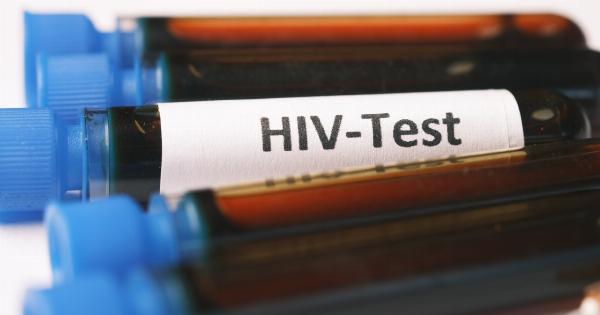In recent years, significant progress has been made in the treatment of HIV, leading to longer and healthier lives for those living with the virus.
Groundbreaking advancements in antiretroviral therapy (ART) and preventive measures have sparked optimism and hope among the global HIV/AIDS community. This article will explore some of the latest developments in HIV treatment, highlighting their impact on the lives of individuals affected by the virus.
Discovering Long-Acting Antiretroviral Drugs
One remarkable advancement in HIV treatment is the development of long-acting antiretroviral drugs. These medications provide an alternative to the daily pill regimen that has been the norm for many years.
Long-acting ARVs, typically administered through injections, help to simplify HIV treatment and improve adherence. For individuals who struggle with daily pill adherence or face challenges in accessing regular healthcare, this new technology can be life-changing.
The Promise of HIV Vaccines
The quest for an effective HIV vaccine has been ongoing for decades, and recent breakthroughs have offered renewed hope. Scientists have identified potential vaccine candidates that have shown promising results in early clinical trials.
While much research needs to be done before a vaccine can be widely distributed, these developments represent a significant step forward in the fight against HIV. The creation of a vaccine would revolutionize HIV prevention strategies and contribute to the eventual eradication of the virus.
Pre-Exposure Prophylaxis (PrEP)
Pre-exposure prophylaxis, commonly known as PrEP, has revolutionized HIV prevention. This daily medication, when taken by individuals at substantial risk of HIV infection, significantly reduces the chances of contracting the virus.
PrEP has been a game-changer for many vulnerable populations, including men who have sex with men, transgender individuals, and sex workers. Its effectiveness has been extensively studied and proven, making it a vital tool in the battle against new HIV infections.
Improved Treatment Regimens for Children
Children living with HIV have unique healthcare needs, and recent advancements have focused on tailoring treatment options specifically for them.
Development of pediatric antiretroviral formulations, including syrups and dispersible tablets, has made treatment administration easier for young patients. Furthermore, early initiation of ART in infants has shown remarkable results in curbing the progression of the virus and extending their life expectancy.
These breakthroughs bring renewed hope for children born with HIV and enhance their overall quality of life.
The Rise of Telemedicine in HIV Care
The COVID-19 pandemic prompted a surge in telehealth services across various medical fields, including HIV care.
Telemedicine has proven to be an efficient and convenient means of accessing healthcare, particularly for individuals living in remote areas and those facing transportation challenges. Through virtual consultations, individuals can receive regular check-ups, discuss medication adherence, and seek necessary support from healthcare professionals.
The integration of telemedicine in HIV care ensures that patients receive continuous, uninterrupted treatment regardless of their location.
Combination Prevention Strategies
Combination prevention involves utilizing multiple HIV prevention methods simultaneously to increase effectiveness.
As part of this approach, initiatives such as “Treatment as Prevention” (TasP) and “Undetectable Equals Untransmittable” (U=U) have gained traction. TasP promotes early antiretroviral treatment for those diagnosed with HIV, lowering their viral load and reducing the risk of transmission.
U=U emphasizes the fact that individuals with undetectable viral loads cannot transmit the virus to others, eliminating the fear and stigma associated with HIV. These comprehensive prevention strategies have had a profound impact, empowering individuals and communities affected by HIV.
Addressing Stigma and Discrimination
Efforts to eradicate HIV cannot be successful without addressing the deep-rooted stigma and discrimination associated with the virus.
Advocacy campaigns, education programs, and policy changes have focused on reducing HIV-related stigma and ensuring equitable access to care. Recognizing that HIV is a medical condition rather than a source of shame is essential in encouraging individuals to seek diagnosis, engage in treatment, and adopt preventive measures.
By challenging societal biases and promoting acceptance, communities can create a supportive environment for people living with HIV.
The Role of Community Support
Community support networks play a vital role in the well-being of individuals living with HIV.
Peer support groups, community-based organizations, and online platforms offer a safe space for individuals to share experiences, seek advice, and access resources. These networks foster resilience, reduce isolation, and provide a sense of belonging. Furthermore, they actively contribute to advocacy efforts and shape policies that prioritize the needs of people living with HIV.
Recognizing and expanding community support systems is crucial in empowering individuals and strengthening the fight against HIV.
Continued Research and Collaboration
While celebrating the advancements made in HIV treatment, it is essential to emphasize the need for continued research.
Scientific collaboration, both domestically and internationally, is critical in unlocking new discoveries and developing innovative therapies. Investment in research allows scientists to explore novel treatment options, refine prevention strategies, and overcome current limitations.
To reach the ultimate goal of ending the HIV/AIDS epidemic, sustained research efforts must persist, focusing on uncovering life-saving breakthroughs and ensuring their accessibility to all.
Conclusion
The remarkable advancements in HIV treatment have transformed the lives of millions of people worldwide.
From long-acting antiretrovirals and promising vaccine candidates to preventive measures like PrEP and combination strategies, the landscape of HIV care is continuously evolving. However, addressing stigma, facilitating community support, and investing in research remain crucial for sustained progress.
By celebrating these new advances and striving for further breakthroughs, we move closer to a world where HIV is no longer a global health crisis.































